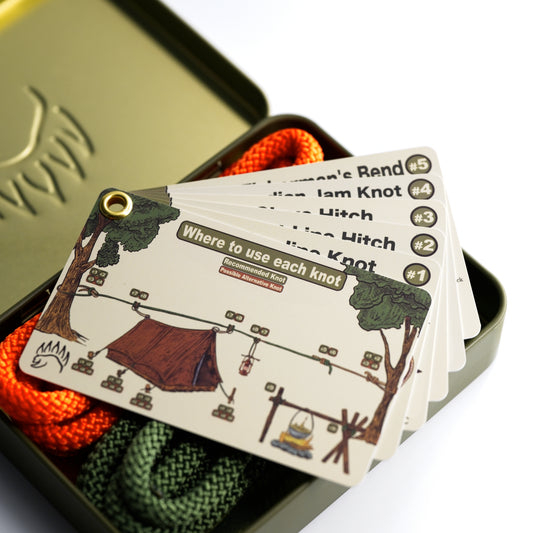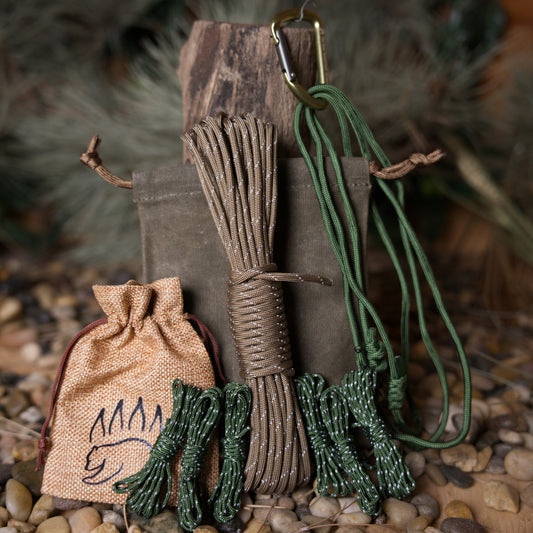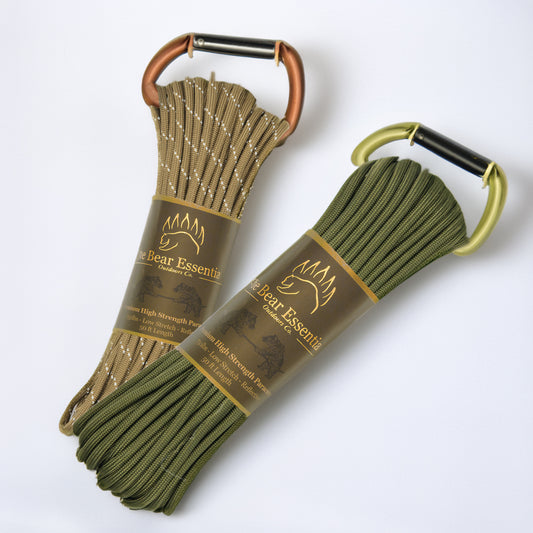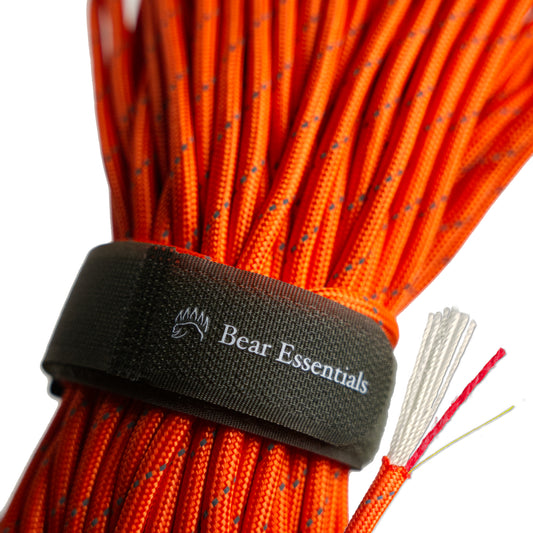How to Tie the Water Knot
Usage
The Water Knot is commonly used to join two pieces of flat webbing or ropes in climbing, camping, and utility tasks, creating a strong, reliable connection for slings or anchors.
Why Learn the Water Knot?
The Water Knot’s robust design ensures secure joins for webbing or ropes. This knot is a go-to for climbers and campers needing reliable connections. It maintains high strength, is simple to tie, and versatile enough to be used in various tasks, creating a flat, low-bulk knot ideal for slings.
Common Uses
-
Climbing:
- Joins webbing to create slings for anchors or extensions.
- Connects ropes for secure climbing or rappelling systems.
-
Camping:
- Ties webbing for tarp or tent guylines in shelter setups.
- Secures cords for temporary camp rigging or gear.
-
Utility:
- Binds flat straps or ropes for securing loads.
- Creates loops for outdoor or household rigging tasks.
ABOK Number
(Ashley Book of Knots)
Other Names
Category
|
Notable Features
- Strong Connection: Provides a reliable and secure joint for webbing or ropes.
- Simple to Tie: Forms quickly using a retraced overhand knot.
- Low Bulk: Creates a flat profile ideal for slings and minimizing bulk.
Variations
No true variations listed in the provided data. For added security, you can tie a backup overhand knot on each tail, though this increases bulk.
Similar Knots
Overhand Knot vs. Water Knot
- Pros: Simpler and quicker to tie for basic joins.
- Cons: Less secure for webbing and prone to slipping under load.
Double Fisherman’s Knot vs. Water Knot
- Pros: Stronger for joining round ropes, especially for permanent ties.
- Cons: Bulkier and harder to untie, less suited for flat webbing.
History
The Water Knot, referenced in The Ashley Book of Knots (#1414), likely originated in maritime and early climbing contexts where joining flat straps or ropes was essential for rigging and anchoring. Its retraced overhand structure made it a reliable choice for webbing in climbing slings. Its widespread use in modern climbing and camping reflects its strength and simplicity for secure joins.
Security Level
The Water Knot provides reliable strength for joining webbing or ropes when tied correctly, holding firm under moderate to heavy loads in slings or rigging. It performs best with flat webbing or ropes of similar diameter and proper tightening. For critical applications, ensure long tails and consider backup knots to prevent slippage.
Downsides
- Binding risk: Can bind tightly under heavy loads, making untying difficult.
- Slipping risk: May loosen if not tightened evenly or with slick materials.
Structure
- Tie a loose overhand knot in the end of one piece of webbing or rope.
- Take the second piece of webbing or rope and retrace the overhand knot in the opposite direction, following the same path.
- Ensure both ends exit the knot parallel and on opposite sides.
- Pull all four strands (two from each piece) to tighten the knot evenly.
- Test the knot by applying tension to confirm it holds securely.
Pro Tip: Leave at least 3-4 inches of tail on each end to prevent slipping.
FAQ
Is the Water Knot strong enough for climbing slings?
Yes, it’s reliable for webbing slings, but ensure proper tightening and test for safety.
What’s the best material for the Water Knot?
Flat nylon or polyester webbing, or similar-diameter ropes, work well.
How does the Water Knot compare to the Double Fisherman’s Knot?
The Water Knot is better for webbing and easier to untie, while the Fisherman’s is stronger for ropes.
Can the Water Knot be used in camping?
Yes, it’s great for joining webbing for tarp or tent guylines.
Why choose the Water Knot over an Overhand Knot?
It’s more secure for webbing and load-bearing, though slightly more complex.
Important Notes on Safety
Common failure points include short tails or uneven tightening, which can cause slipping. Always verify the knot is tight with sufficient tail length before loading, and check for compatibility between materials. Inspect webbing or ropes for wear before tying. Ensure at least 3-4 inches of tail on each end for security. Practice in low-stakes settings to master the technique.







